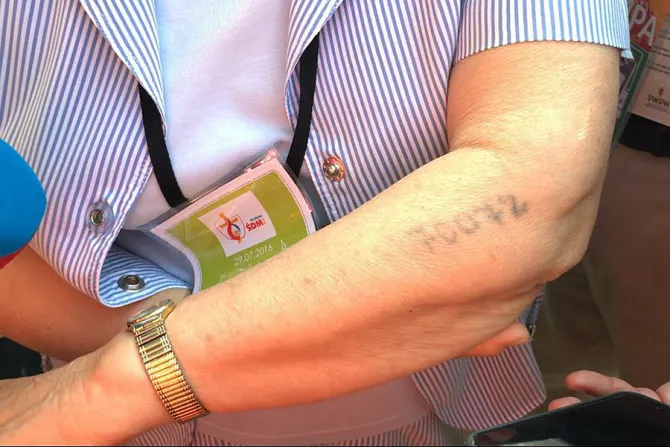Bielsko-Biala, Poland, Jul 29, 2016 / 16:02 pm
A survivor of the Auschwitz concentration camp welcomed Pope Francis' Friday visit and asked the world to remember the suffering that took place there.
"It is important for me and I am very excited," Lidia Maksimovic, 75, told journalists at the camp July 29. "It is not possible to forget about these horrible things and it is important also that people would come here and would see and learn what happened here. So that all that happened here would never happen again."
Maksimovic is a survivor of the Auschwitz-Brikenau concentration camp run by the Nazis in Poland. As many as 1.5 million people died at the Auschwitz complex, including St. Maximilian Kolbe.
On Friday Pope Francis visited several parts of the complex. He prayed in silence for several minutes at the courtyard of the original camp, known as Auschwitz I. He was then taken by car to the infamous Block 11 building. There, he was welcomed by Poland's Prime Minister, Beata Szydlo.
He prayed for a moment in silence.
Among those present for his visit was a group of ten men and women who had survived the Holocaust, among whom was Maksimovic.
Her family was of Russian origin living in Nazi-occupied territory in what is now Belarus. The Nazis suspected them of collaborating with the Soviet Union, and they were shipped to Auschwitz with about 1,500 other civilians.
She was stripped naked and tattooed with a number on her arm. She was three years old.
"I was numbered in my left hand as a prisoner. I have it from my childhood," she told CNA.
Part of the camp served as a laboratory for Nazi doctor Josef Mengele's human experiments.
"We were divided into two groups. I belonged to the group of strong and healthy children from which Doctor Mengele personally choose the children for his targets for medical experiments," Maksimovic said.
"The most difficult time for us, for mothers and children was the moment of numbering and division," she said. "They divided children from the mothers. Moms hugged their children and did not want to leave them, but babies were pulled out from their embraces and thrown out as animals. All women were crying. Kicking them, the Nazis forced them to go out to the specially prepared barracks."
"We as children saw our mothers take off all their clothes and then they were shaved. We children could not recognize our mothers because we have never seen them in that conditions," she said.
"Then our moms were dressed in those clothes which you can see here presented at the museum. They were blue and gray uniforms with wooden shoes."
The children were sent to the children's barracks.
"We were looking to the other children, to the places where they lived and it was horrible, not like you see it now," she said. "Now everything is clean… at that time, it was dirty and excrement was around. There were no toilets or clean water."
It took nearly 20 years for her to be reunited with her mother following the liberation of the camps by Allied forces.
(Story continues below)
Pope Francis chose to maintain silence in prayer and not give remarks at Auschwitz.
Maksimovic considered this a good choice.
"This place is the place of silence," she said. "If someone can say something, they have to say that people have suffered here and were lowered to the very bottom."




